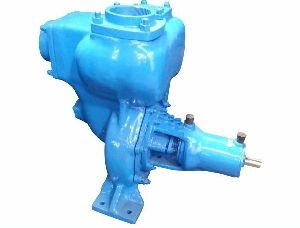
A self-priming pump is a type of centrifugal pump designed to automatically evacuate air from the suction pipe and casing, allowing the pump to start and operate without the need for manual priming. Traditional centrifugal pumps require the suction line to be filled with liquid before starting, which can be a cumbersome process, especially when dealing with deep wells or long suction lines.
The self-priming pump overcomes this limitation by incorporating a special casing design and impeller configuration that allows it to evacuate air from the pump and suction line. When the pump is initially started, it creates a partial vacuum within the casing, which draws air out of the suction line and replaces it with the pumped liquid.
Once the pump has successfully primed itself and filled the casing with liquid, it can operate normally and pump the fluid without any interruptions. Self-priming pumps are commonly used in applications where the pump is located above the liquid source, or when there is a risk of intermittent air in the suction line.
Some common applications of self-priming pumps include pumping water from wells, dewatering construction sites, transferring liquids from one container to another, and in various industrial processes where the pump needs to start automatically and handle air-containing fluids efficiently.
It’s important to note that while self-priming pumps offer convenience, their performance may vary depending on factors like the pump’s design, the type of liquid being pumped, the suction lift, and the condition of the pump. Proper maintenance and correct installation are essential to ensure optimal performance and longevity of the self-priming pump.
